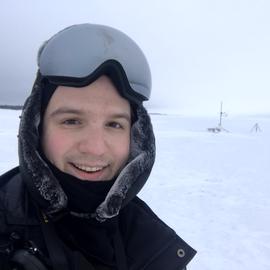Abstract
The deployment of small unmanned aircraft systems (UAS) to collect routine in situ vertical profiles of the thermodynamic and kinematic state of the atmosphere in conjunction with other weather observations could significantly improve weather forecasting skill and resolution. High-resolution vertical measurements of pressure, temperature, humidity, wind speed and wind direction are critical to the understanding of atmospheric boundary layer processes integral to air–surface (land, ocean and sea ice) exchanges of energy, momentum, and moisture; how these are affected by climate variability; and how they impact weather forecasts and air quality simulations. We explore the potential value of collecting coordinated atmospheric profiles at fixed surface observing sites at designated times using instrumented UAS. We refer to such a network of autonomous weather UAS designed for atmospheric profiling and capable of operating in most weather conditions as a 3D Mesonet. We outline some of the fundamental and high-impact science questions and sampling needs driving the development of the 3D Mesonet and offer an overview of the general concept of operations. Preliminary measurements from profiling UAS are presented and we discuss how measurements from an operational network could be realized to better characterize the atmospheric boundary layer, improve weather forecasts, and help to identify threats of severe weather.
Publication
Sensors, 19, 2720
Click the Cite button above to demo the feature to enable visitors to import publication metadata into their reference management software.

Research Scientist
Tyler is a Research Scientist in CIWRO working on using ground-based remote sensors and WxUAS to advance the understanding of various boundary layer processes. He is acitvely exploring ways to optimally combine data collected from WxUAS and ground-based remote sensing.

Scientist
Brian is a former graduate student from the BLISS team.

Former Research Scientist
Elizabeth Pillar-Little was the Assistant Director for the former Center for Autonomous Sensing and Sampling at the University of Oklahoma, where she was responsible for coordinating the field deployments of RPAS teams from both an operational and scientific perspective. She also ensured the continuity of day-to-day center business and enjoyed spearheading outreach and science communication activities on behalf of the center. She was also appointed as a research scientist in the School of Meteorology and led the atmospheric chemistry research nucleus of CASS. Dr. Pillar-Little’s research interests were broadly centered around atmospheric and environmental chemistry, but she is very passionate about atmospheric composition, aerosol optical properties and composition, and the interplay between aerosols and convection initiation.

Research Engineer
My research centers around developing small unmanned aircraft systems for adaptive atmospheric sampling which involves CAD modeling, systems optimization, hardware and software integration, and control theory. I have led the design of the CopterSonde series of vehicles, which is used to perfrom controlled and targeted weather sampling at high temporal and spatial resolutions. I am also advising other projects in which sensor integration or new UAS are required.